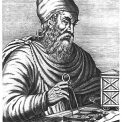LEARNING OUTCOMES
Teaching is primarily aimed at learning basic arithmetic methods for solving fluid mechanics problems. In the laboratory part of the course, simple programs are implemented to solve various types of physical problems.
Upon successful completion of the course the student will be able to:
• Understand how iterative algorithms are applied and understand basic concepts such as the consistency and convergence of a numerical scheme of computational fluid mechanics.
• To use knowledge of fluid mechanics so that it can modify fluid engineering problems and solve them by combining numerical shapes and basic knowledge of numerical analysis.
• Recognize and combine basic arithmetic methods to compose a fluid problem solving program.
• Interpret and illustrate arithmetic solutions to basic fluid engineering problems.
• To acquire basic knowledge of computational fluid engineering to use them in simulations of complex problems in open source software and / or commercial code.
• To acquire knowledge necessary for conducting research in computational fluid engineering
General Competences
• Ability to understand the basic numerical methods of computational fluid engineering.
• Promoting free, creative, and inductive thinking
• Ability to distinguish between methods in order to be able to choose the most appropriate for the problem to be solved
• Ability to apply and display the results of computational fluid engineering programs for basic engineering problems.
SYLLABUS
One-dimensional motion of bodies in fluid, initial value problems, Runge-Kutta method. Indicative problems: drop of fluid in the atmosphere, marginal speed of raindrops, wing oscillation in an air tunnel, two-dimensional movement of a ballistic missile in the atmosphere.
Boundary value problems. Shooting method. Method of finite differences, half-interval, and integral equations. Indicative problems: Flow over flat plate, Blasius problem.
Solution with Runge Kutta and method of finite differences with implicit numerical schemes. Indicative problem: Flat thermometer problem.
Discretization methods. Taylor expansion, First and second order discretization schemes, more complex discretization schemes. Stability and consistency of a numerical scheme. Von Neumann method. The method of finite differences. Techniques for solving parabolic, elliptical and hyperbolic problems with the method of finite differences.
Solution of partial differential equations of parabolic type. Forward Time Central Space, Crack Nicolson schemes. Finite differences method for multidimensional problems. Rayleigh problem, flow in a two-dimensional cavity created due to vorticity.
Solution of partial differential equations of elliptic type. Liebmann, Richardson, SOR schemes. Solution of the Poisson equation. Indicative problems: Dynamic flow in a non-rectangular conduit. Dynamic flow around a cylinder.
Solution of partial differential equations of hyperbolic type. Upwind, upstream, Lax, Leapfrog, implicit Euler methods. Higher order upwind schemes. Indicative problems: Wave propagation, Shock wave formation.
In laboratory exercises, at least six of the above indicative problems are solved in Fortran or Python programming language.
SUGGESTED BIBLIOGRAPHY
Μπεργελές Γ., «Υπολογιστική Ρευστομηχανική», Εκδόσεις Καλαμαρά Έλλη, 5η έκδοση 2012, ISBN 978-960-9400-37-4, In Greek.
Ι.Β. Σούλης, «Υπολογιστική Μηχανική Ρευστών», Εκδότης: Χ.Ν. Αϊβαζής, 1η έκδοση 2008, ISBN 978-960-99293-2-5, In Greek.
Versteeg – Μalalasekera, «Introduction to computational fluid dynamics», 2nd Edition,
T.J. Chung, «Computational Fluid Dynamics», Cambridge University Press, 2010,.
Oleg Zikanov, «Εισαγωγή Στην Υπολογιστική Ρευστοδυναμική», Εκδόσεις Fountas, 1η Έκδοση 2014, ISBN 9789603307587, In Greek.
Ferziger, Peric, «Computational Methods for Fluid Dynamics», ISBN 978-3-642-56026-2 2002.
Fletcher C.A.J., “Computational Techniques for Fluid Dynamics, Volumes 1+2”, Springer Verlag, Berlin, 1998.
Anderson J.D. Jr., “Modern Compressible Flow”, Mc Graw-Hill, 1990.
Anderson J.D. Jr., “Fundamentals of Aerodynamics”, Mc Graw-Hill, 2nd Edition, 1990.
Anderson J.D. Jr., “Computational Fluid Dynamics”, Mc Graw-Hill, 1995.
